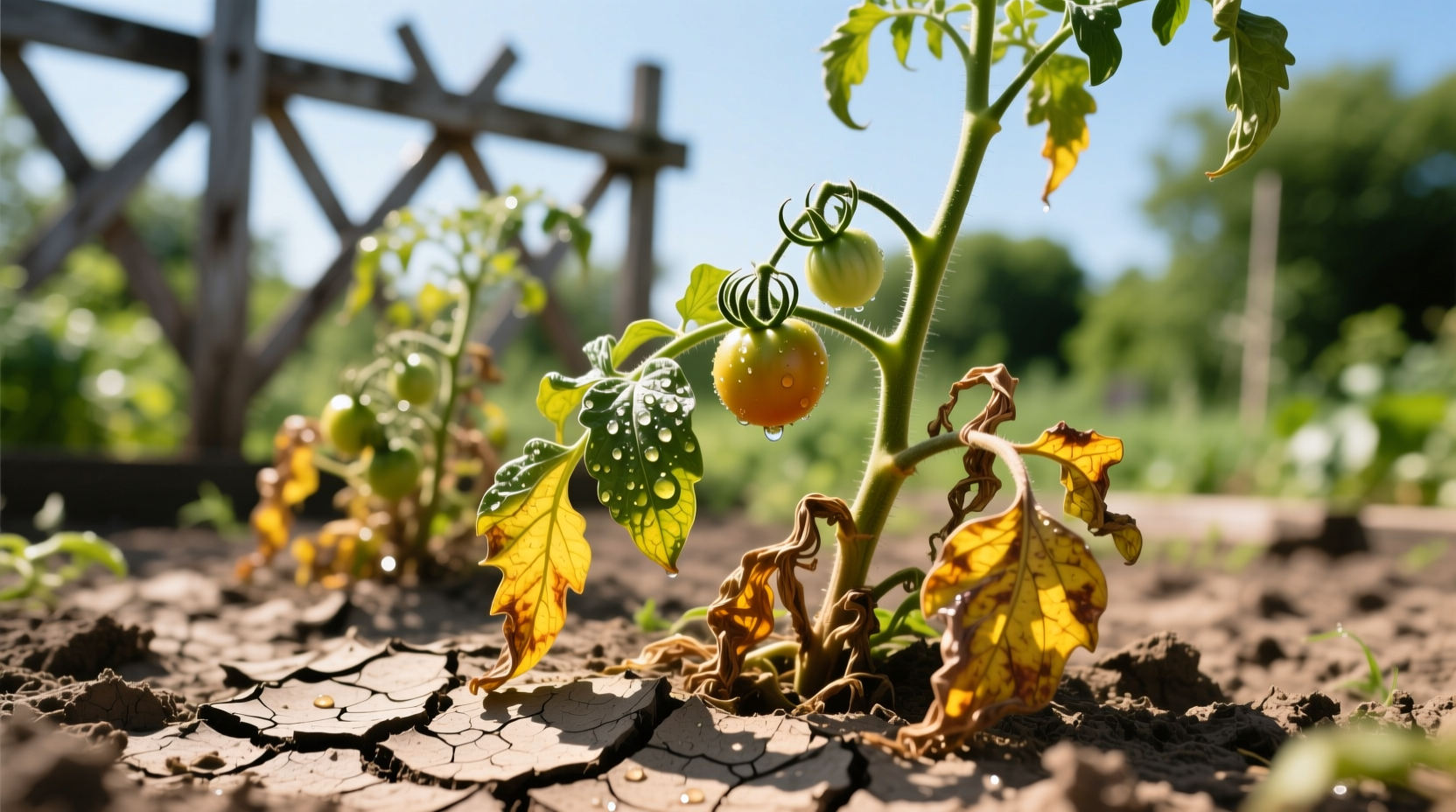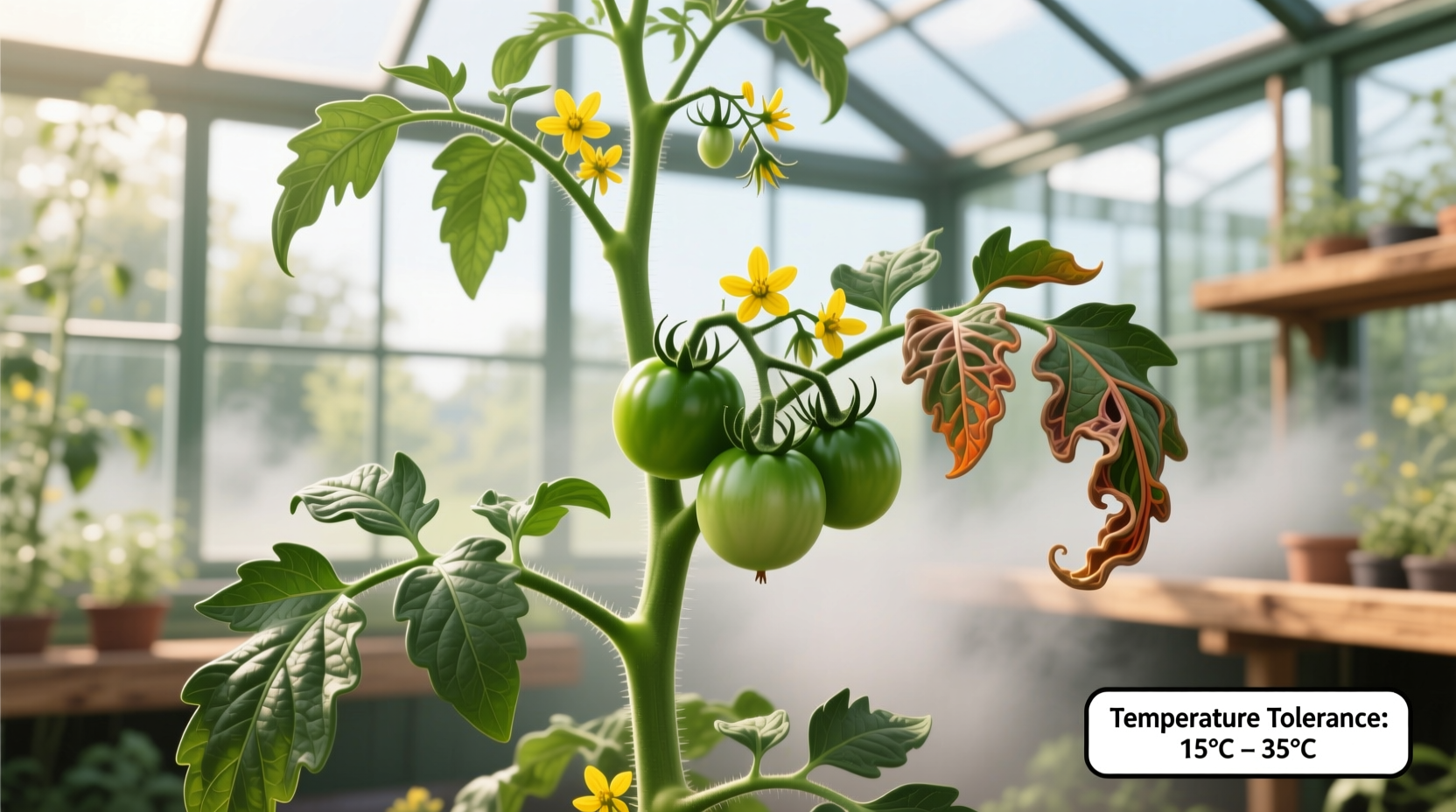Whether you're growing tomatoes in a backyard garden or commercial operation, temperature management directly impacts your yield and fruit quality. This guide delivers science-backed temperature thresholds for each growth stage, practical solutions for extreme conditions, and region-specific strategies to maximize your tomato harvest.
Optimal Temperature Ranges for Tomato Growth Stages
Tomato plants respond differently to temperature throughout their lifecycle. Knowing these specific requirements helps you time planting and implement protective measures when needed.
Seed germination: 70-80°F (21-27°C) produces fastest, most uniform sprouting. Below 60°F (15°C), germination slows significantly.
Seedling development: Maintain 65-75°F (18-24°C) during the day and 60-65°F (15-18°C) at night. Cooler temperatures strengthen stems but slow growth.
Vegetative growth: 70-85°F (21-29°C) supports vigorous leaf and stem development. Temperatures consistently above 90°F (32°C) reduce photosynthetic efficiency.
Flowering and fruit set: The critical range is 70-75°F (21-24°C). Below 55°F (13°C) or above 85°F (29°C), pollen becomes nonviable, causing blossom drop. Night temperatures above 75°F (24°C) particularly disrupt fruit set.
Fruit ripening: 68-77°F (20-25°C) produces optimal color development and sugar accumulation. Extreme heat (above 85°F/29°C) slows lycopene production, resulting in uneven ripening.
Cold Temperature Effects on Tomato Plants
Tomatoes originated in tropical regions of South America, making them inherently sensitive to cold. Understanding the progression of cold damage helps you implement timely protection.
| Temperature Range | Exposure Duration | Observed Effects |
|---|---|---|
| 55-60°F (13-16°C) | Several days | Stunted growth, reduced flowering |
| 50-55°F (10-13°C) | 24-48 hours | Blossom drop, poor fruit set |
| 45-50°F (7-10°C) | Several hours | Leaf discoloration, wilting |
| 40-45°F (4-7°C) | 2-4 hours | Cellular damage, blackened leaves |
| Below 40°F (4°C) | 1 hour or less | Frost damage, plant death |
According to research from the University of California Agriculture and Natural Resources, temperatures below 50°F (10°C) disrupt membrane function in tomato cells, reducing nutrient uptake and photosynthetic efficiency. This explains why tomatoes struggle in cool coastal climates without protection.
Heat Stress Challenges and Solutions
While tomatoes love warmth, excessive heat creates significant challenges. When temperatures exceed 90°F (32°C), several physiological problems occur:
- Blossom drop: High temperatures make pollen sterile, preventing fruit set
- Sunscald: Direct sun on fruit causes white or yellow patches that become necrotic
- Reduced sugar content: Extreme heat slows sugar accumulation in ripening fruit
- Increased disease susceptibility: Heat-stressed plants become vulnerable to fungal diseases
Research from Cornell University's College of Agriculture and Life Sciences shows that night temperatures above 75°F (24°C) are particularly detrimental to fruit set, as they increase respiration rates while decreasing photosynthetic gains.

Practical Temperature Management Strategies
Successful tomato growers implement these evidence-based techniques to mitigate temperature extremes:
Cold Protection Methods
Frost protection: Use floating row covers when temperatures drop below 50°F (10°C). For hard freezes, combine with heat sources like water-filled jugs or frost protection candles.
Season extension: Wall o' Water plant protectors create a microclimate 10-15°F warmer than ambient temperature, allowing earlier planting.
Soil warming: Black plastic mulch raises soil temperature by 5-10°F (3-6°C), promoting root development in cool spring conditions.
Heat Mitigation Techniques
Strategic shading: Install 30-40% shade cloth during peak summer months to reduce temperatures by 5-10°F (3-6°C) without significantly reducing light.
Water management: Consistent moisture is critical during heat waves. Drip irrigation maintains soil moisture without wetting foliage, which can cause temperature shock when water evaporates.
Variety selection: Choose heat-tolerant varieties like 'Solar Fire', 'Heatmaster', or 'Florida 91' for regions with sustained temperatures above 90°F (32°C).
Regional Considerations for Tomato Temperature Management
Temperature challenges vary significantly by climate zone, requiring tailored approaches:
Cool coastal regions: Focus on heat accumulation techniques. Use dark-colored containers that absorb heat, position plants near south-facing walls, and select early-maturing varieties.
Continental climates with short seasons: Prioritize season extension. Start seeds indoors 6-8 weeks before last frost, use black plastic mulch, and select determinate varieties that ripen fruit within a compressed timeframe.
Hot desert climates: Plant tomatoes in partial shade with afternoon protection. Use light-colored mulch to reflect heat from soil, and consider growing as a fall crop when temperatures begin cooling.
Humid subtropical regions: Focus on disease prevention during hot, humid periods. Use trellising for better air circulation, select disease-resistant varieties, and water early in the day to allow foliage to dry.
According to the USDA Plant Hardiness Zone Map, understanding your specific zone helps determine optimal planting dates and necessary temperature protection measures for successful tomato cultivation.
Advanced Temperature Monitoring and Response
Modern gardeners can leverage technology for precise temperature management:
- Digital thermometers with min/max recording track daily temperature fluctuations
- Soil temperature probes ensure root-zone conditions remain optimal
- Weather apps with frost alerts provide advance warning for cold protection
- Smart irrigation controllers adjust watering based on temperature and evaporation rates
For commercial operations, temperature-controlled high tunnels with automated venting systems maintain ideal conditions throughout the growing season, extending harvest windows by several weeks in both spring and fall.
Conclusion
Mastering tomato plant temperature tolerance transforms your harvest potential. By understanding the specific temperature requirements at each growth stage and implementing appropriate protection strategies, you can successfully grow tomatoes in nearly any climate. Remember that consistent monitoring and timely intervention make the difference between average and exceptional harvests. Whether you're dealing with unexpected frosts or summer heat waves, the techniques outlined in this guide provide practical solutions for maintaining optimal growing conditions throughout the season.











 浙公网安备
33010002000092号
浙公网安备
33010002000092号 浙B2-20120091-4
浙B2-20120091-4